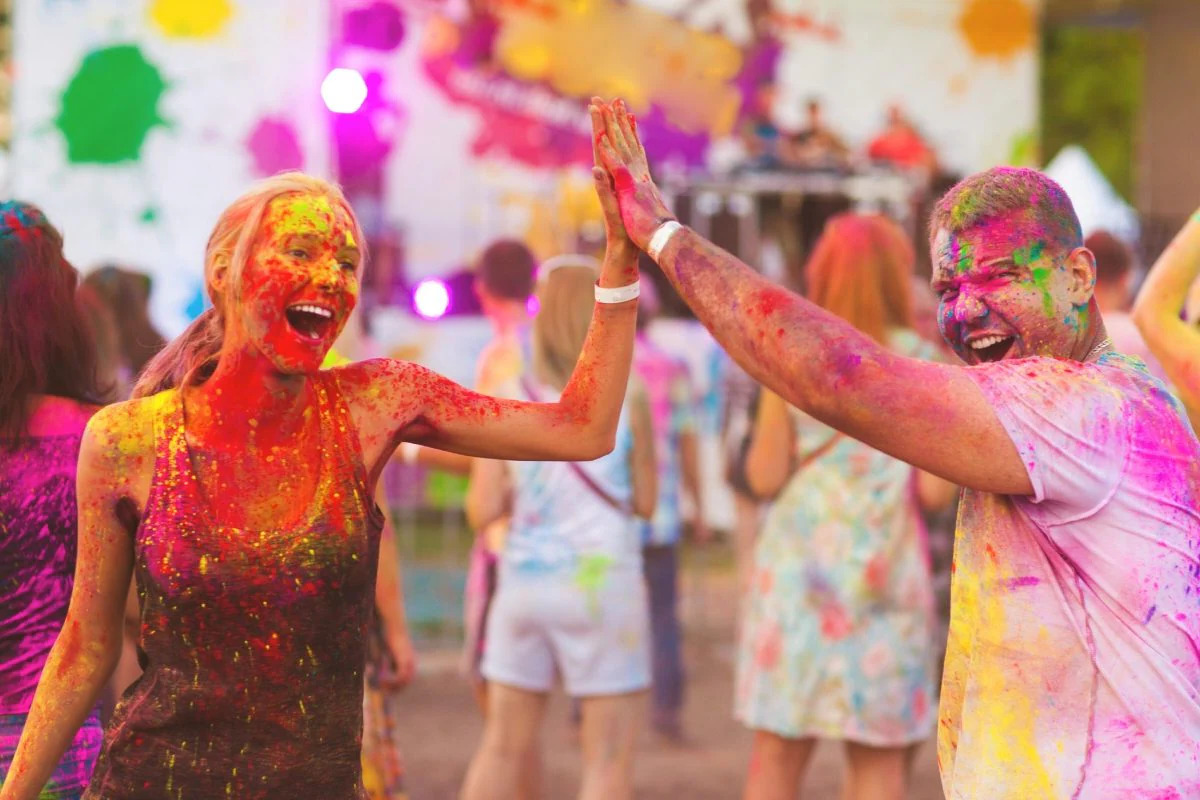
Holi, often called the "Festival of Colors," is a vibrant celebration marking the arrival of spring in India. But what makes this festival so special? Holi isn't just about throwing colored powders; it's a time for joy, unity, and renewal. People from all walks of life come together to sing, dance, and feast. The festival's roots lie in ancient Hindu traditions, symbolizing the victory of good over evil. Bonfires, known as Holika Dahan, are lit to commemorate this triumph. Whether you're a seasoned participant or a curious newcomer, understanding the essence of Holi can deepen your appreciation for this lively festival. Ready to dive into some colorful facts?
The Origins of Holi
Holi, often called the "Festival of Colors," has a rich history rooted in ancient Indian traditions. Let's explore some fascinating facts about its origins.
- Holi is one of the oldest Hindu festivals, with references dating back to ancient texts like the Puranas and Dasakumara Charita.
- The festival marks the arrival of spring and the end of winter, symbolizing the victory of good over evil.
- Holi is linked to the legend of Prahlad and Hiranyakashipu, where Prahlad's devotion to Lord Vishnu led to the defeat of the demon king Hiranyakashipu.
- Another popular legend associated with Holi is the love story of Radha and Krishna, celebrating their divine love.
The Celebration of Colors
Holi is renowned for its vibrant and colorful celebrations. Here are some intriguing facts about how people celebrate this joyous festival.
- People throw colored powders, known as "gulal," at each other, creating a rainbow of hues in the air.
- Water balloons and water guns are also used to drench friends and family in colorful water.
- The festival begins with Holika Dahan, a bonfire symbolizing the burning of evil spirits.
- Traditional songs and dances are performed, adding to the festive atmosphere.
- Special sweets and delicacies like gujiya, mathri, and thandai are prepared and shared among loved ones.
Regional Variations
Holi is celebrated differently across various regions of India, each with its unique customs and traditions.
- In Barsana, Uttar Pradesh, women playfully beat men with sticks in a tradition called "Lathmar Holi."
- In West Bengal, Holi is known as "Dol Jatra" or "Dol Purnima," where idols of Krishna and Radha are carried around in processions.
- In Punjab, Holi coincides with the festival of Hola Mohalla, where Sikhs display martial arts and hold mock battles.
- In Maharashtra, people celebrate Rang Panchami, which involves playing with colors five days after Holi.
- In Goa, Holi is called "Shigmo," featuring parades, folk dances, and music.
Holi Around the World
Holi's popularity has spread beyond India, with celebrations taking place in various countries worldwide.
- In Nepal, Holi is celebrated with equal fervor, known as "Fagu Purnima."
- The festival has gained popularity in countries with large Indian communities, such as the United States, Canada, and the United Kingdom.
- In Mauritius, Holi is a public holiday, celebrated with traditional music and dance.
- In Trinidad and Tobago, Holi is called "Phagwa," marked by singing traditional songs called "Chowtal."
- South Africa also celebrates Holi, especially in cities with significant Indian populations like Durban.
The Spiritual Significance
Beyond the fun and frolic, Holi holds deep spiritual significance for many.
- Holi represents the triumph of good over evil, as seen in the story of Prahlad and Hiranyakashipu.
- The festival encourages forgiveness and the mending of broken relationships, promoting unity and harmony.
- Holi is also a time for cleansing and renewal, both physically and spiritually, as people let go of past grievances.
- The vibrant colors of Holi symbolize the diversity and beauty of life, reminding people to appreciate the different shades of existence.
- Many devotees use Holi as an opportunity to worship and seek blessings from deities, particularly Lord Krishna and Radha.
Fun Facts About Holi
Let's wrap up with some fun and lesser-known facts about this colorful festival.
- Holi is not just about colors; it also involves playful teasing, singing, and dancing, making it a truly joyous occasion.
Final Thoughts on Holi
Holi, known as the Festival of Colors, is a vibrant celebration that brings people together. It marks the arrival of spring and the victory of good over evil. This festival is not just about throwing colors; it’s about unity, love, and joy. From the bonfires of Holika Dahan to the playful splashes of color, every aspect of Holi has a story and significance.
Whether you’re in India or anywhere else in the world, participating in Holi can be a memorable experience. It’s a time to forget differences, mend broken relationships, and spread happiness. So, next time Holi comes around, grab some colors, join the fun, and immerse yourself in the spirit of this beautiful festival. Holi truly showcases the rich cultural heritage and the joyous spirit of the people who celebrate it.
Was this page helpful?
Our commitment to delivering trustworthy and engaging content is at the heart of what we do. Each fact on our site is contributed by real users like you, bringing a wealth of diverse insights and information. To ensure the highest standards of accuracy and reliability, our dedicated editors meticulously review each submission. This process guarantees that the facts we share are not only fascinating but also credible. Trust in our commitment to quality and authenticity as you explore and learn with us.


